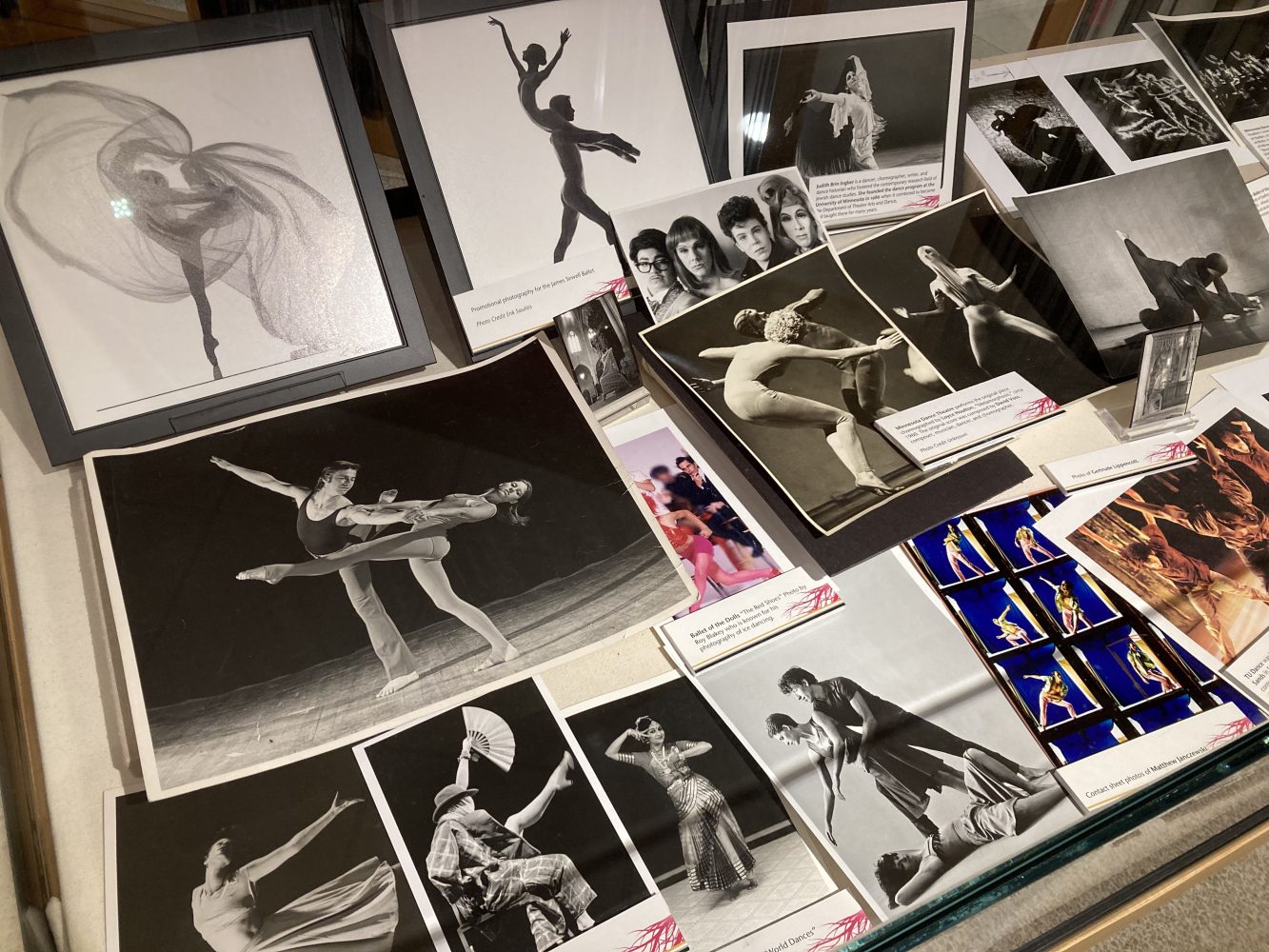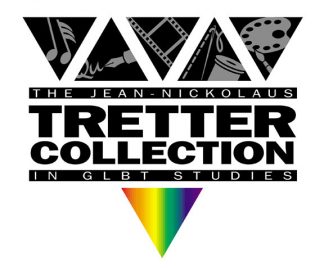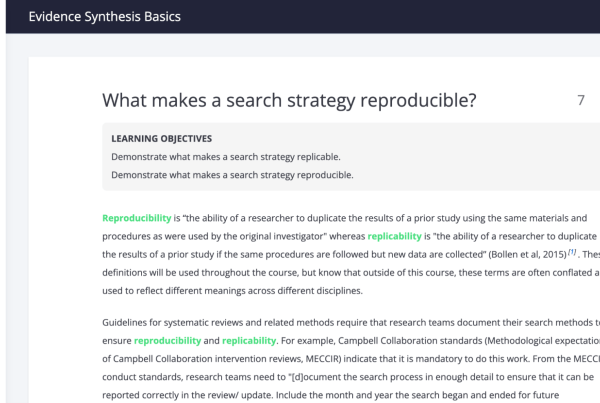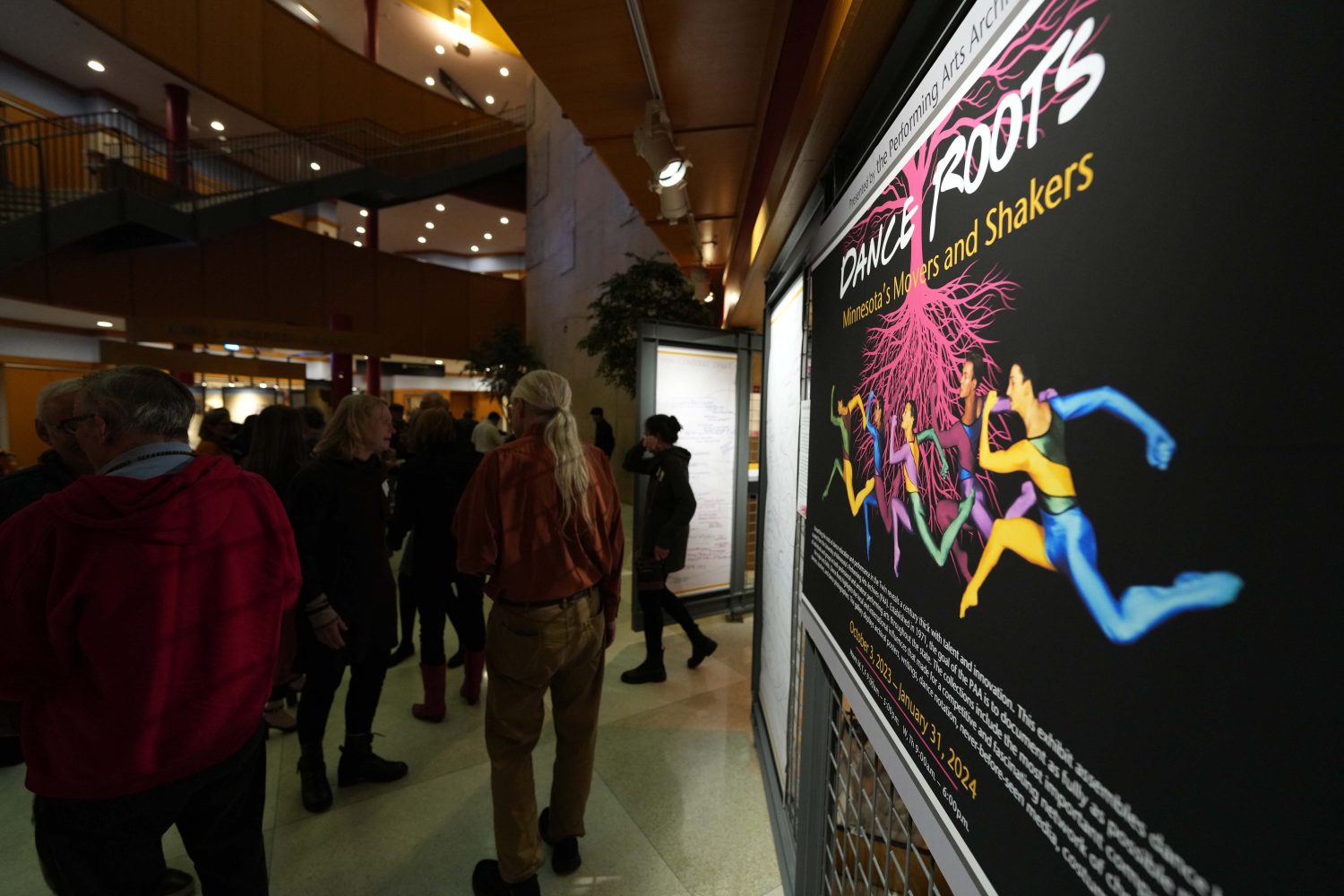
Attendees gather for the opening of PAA’s “Dance Roots” exhibit, on Oct. 27, 2023. (Photo/Luke Logan)
Dance is ephemeral. It’s there, and then it’s gone. That’s what makes dance so captivating, and what makes its preservation so challenging.
The Performing Arts Archives’ newest exhibit, “Dance Roots: Minnesota’s Movers and Shakers,” captures nearly a century of dance history in Minnesota, and represents the expansive, diverse scene that bloomed from that lineage.
“The roots have really influenced the development of where we are today,” said Deborah Ultan, the arts and performing arts librarian, curator, and archivist. “Our dance community is thriving. It’s exciting.”
Tracing the roots
Ultan, the new curator for the Performing Arts Archives (PAA), began this exhibit to learn more about the dance archives housed in the University of Minnesota Libraries, as well as form connections with the broader dance community in the Twin Cities.
The exhibit took three months of plowing through the boxes and files, which felt like a giant treasure hunt. To create the exhibit in such a short period of time, Ultan needed a team of volunteers and a part-time assistant.
Ultan’s advisory committee welcomed longtime dancers, educators, and leaders, including Judith Brin-Ingber, Colleen Callahan, Joanne Gordon, Georgia Finnegan-Saulitis, and Arts and Performing Arts Librarian Project Assistant, MollieRae Miller.
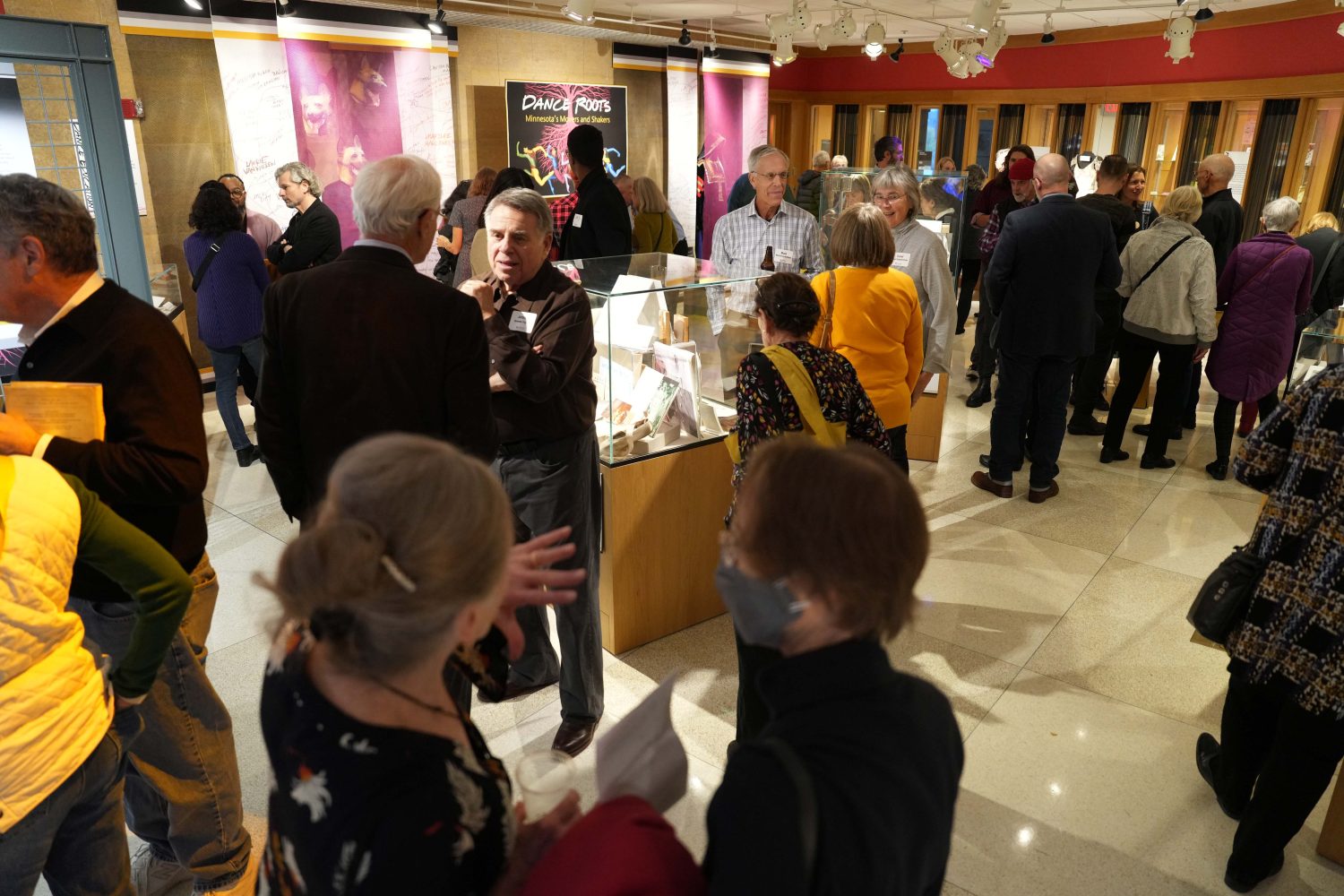
Attendees browse the display cases at the opening of PAA’s “Dance Roots” exhibit, on Oct. 27, 2023. Exhibit designed by Darren Terpstra. (Photo/Luke Logan)
The team made a point to include as much material as possible — even displaying loaned materials from the Walker Art Center Archives, courtesy of Archivist Jill Vuchetich. Consequently, the display cases have never looked so full.
Sorting and organizing the materials was a daunting task, and instead of following a chronological timeline, the team decided to categorize the materials into eight exploratory themes: dance educators, icons and immortals, movers and shakers, places and spaces, writers and facilitators, props and production, photographers, and lastly, soles and souls.
Exhibit Designer Darren Terpstra helped develop the overall look and feel of the exhibit, using the motif of roots to illustrate the lineage of Minnesota dance and its many branching segments.
‘Dance touches every single part of my community’
For Miller, the exhibit underscored just how far-reaching the dance community is. As she sorted through boxes, she found documents referencing people she knows or places she’s been. It also made her realize the importance of collaboration in dance, how it connects with musicians, stage and costume designers, photographers and writers, educators, and so on.
“I think my favorite case is always going to be the props and production case. It shows how much work goes into putting a production together. It is just really beautiful,” Miller said.“I now know more about dance than I ever thought I would, which is wonderful because I learned that it touches every single part of my community.”
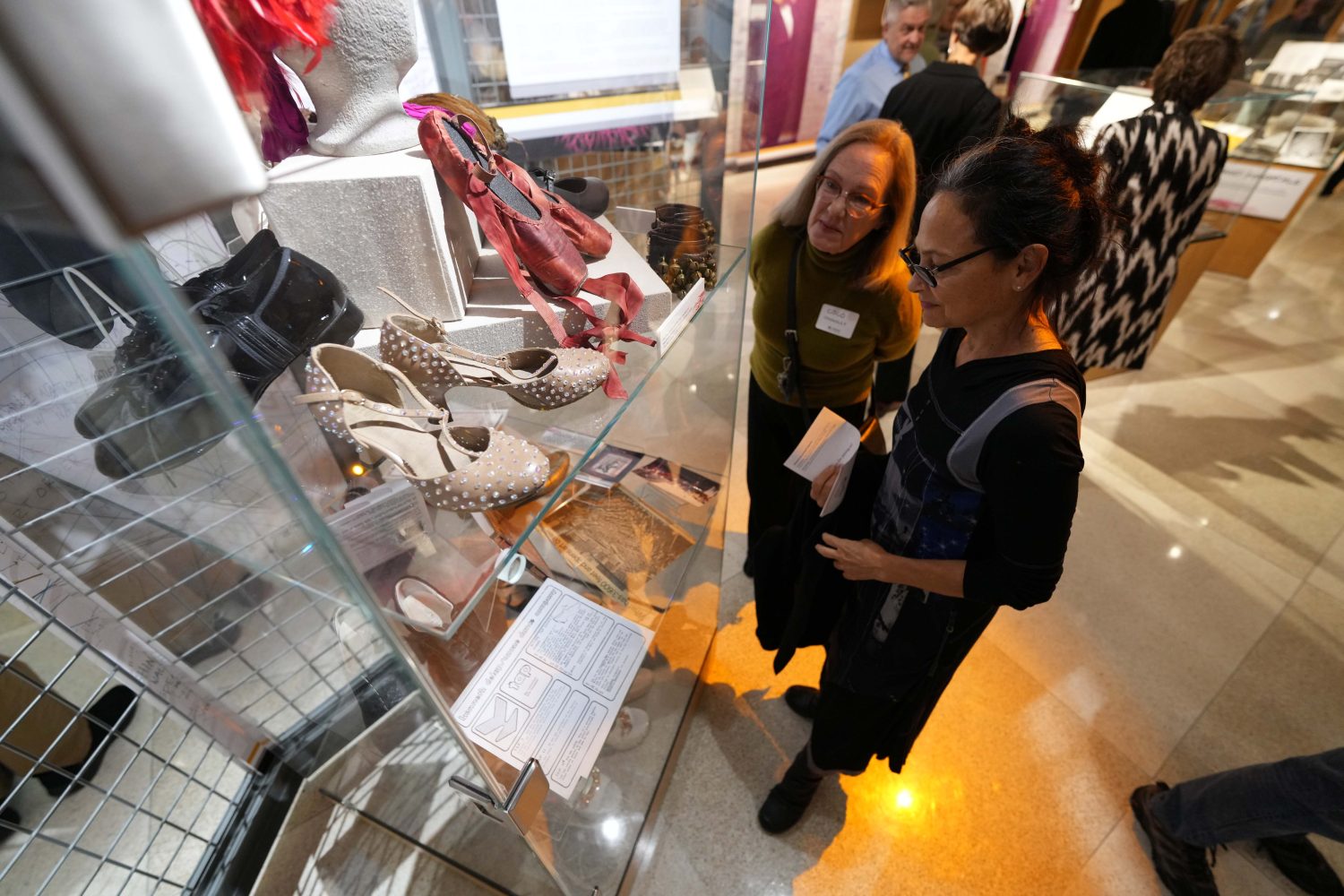
Attendees browse the display cases at the opening of PAA’s “Dance Roots” exhibit, on Oct. 27, 2023. Exhibit designed by Darren Terpstra. (Photo/Luke Logan)
Ultan’s favorite case is soles and souls, which displays different types of dance shoes and accessories, worn by some of Minnesota’s greats. The shoes feel deeply symbolic to her — the sweat, the torn fabric. It’s easy to imagine the person wearing them, their passion, energy, and the essence of the dancer.
“It’s the soul that goes into creating and being present in the moment of dance,” Ultan said.
The forerunners of Minnesota dance
While dance has always existed in Minnesota, the collection’s roots lead back to the early 1940s with several dance elders like Gertrude Lippencott, Anna and Lorand Andaházy, Loyce Houlton, and Nancy Hauser.
Lippencott, a St. Paul native, founded the first modern dance company in Minneapolis in 1937, appropriately called the Modern Dance Center of Minneapolis. At the time, it was also the only modern dance performance group between Chicago and San Francisco.
In 1945, Lorand and Anna Andaházy, two members of the Ballet Russe de Monte Carlo, resettled in St. Paul following World War II. Two years later, the couple opened the first classical ballet school in the state, the Andaházy School of Classical Ballet, and in 1953, they opened the Andaházy Ballet Company.
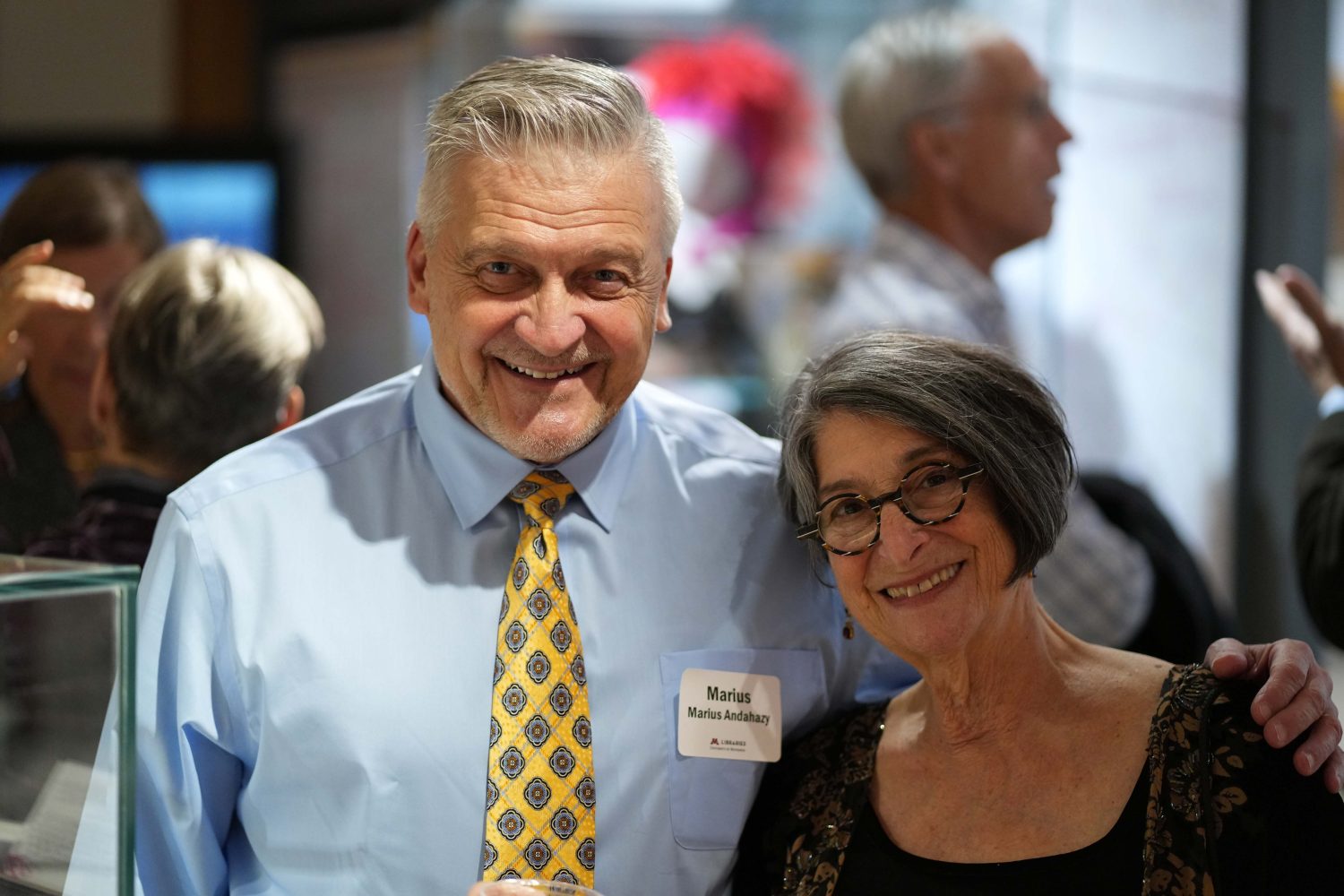
Marius Andaházy, artistic director at Andaházy Ballet Company and son of Anna and Lóránt Andaházy, poses for a picture with Judith Brin-Ingber, a choreographer, dancer, and dance scholar, at the “Dance Roots” opening event, on Oct. 27, 2023. (Photo/Luke Logan)
Hauser was a dancer, choreographer, and educator from New York who trained under Hanya Holm. She taught at Carleton College and Macalester College throughout the ’40s and ’50s, and in 1961, she founded the Nancy Hauser Dance Company and School, which performed contemporary and modern dance rooted in the German Expressionist tradition.
Houlton, from Proctor, Minnesota, had studied dance at Carleton College in Northfield and at New York University throughout the 1940s, before moving back to Minneapolis at the close of the decade. She would later found the Minnesota Dance Theatre and School in 1962.
A cultural hub
East Coast and European influences set the stage for Minnesota dance, but the latter half of the 20th century brought more diverse cultures and more experimental forms of dance to the Twin Cities.
“Dance has forever been a hub for every single culture,” Miller said.
Mary Moore Easter, who was raised in Petersburg, Virginia, was an independent Blacker dancer and choreographer during the ’60s and ’70s. She founded and directed Carleton College’s dance program, teaching there from 1969 to 2008. She was also the director of the African/African-American Studies program and has published several poetry books.
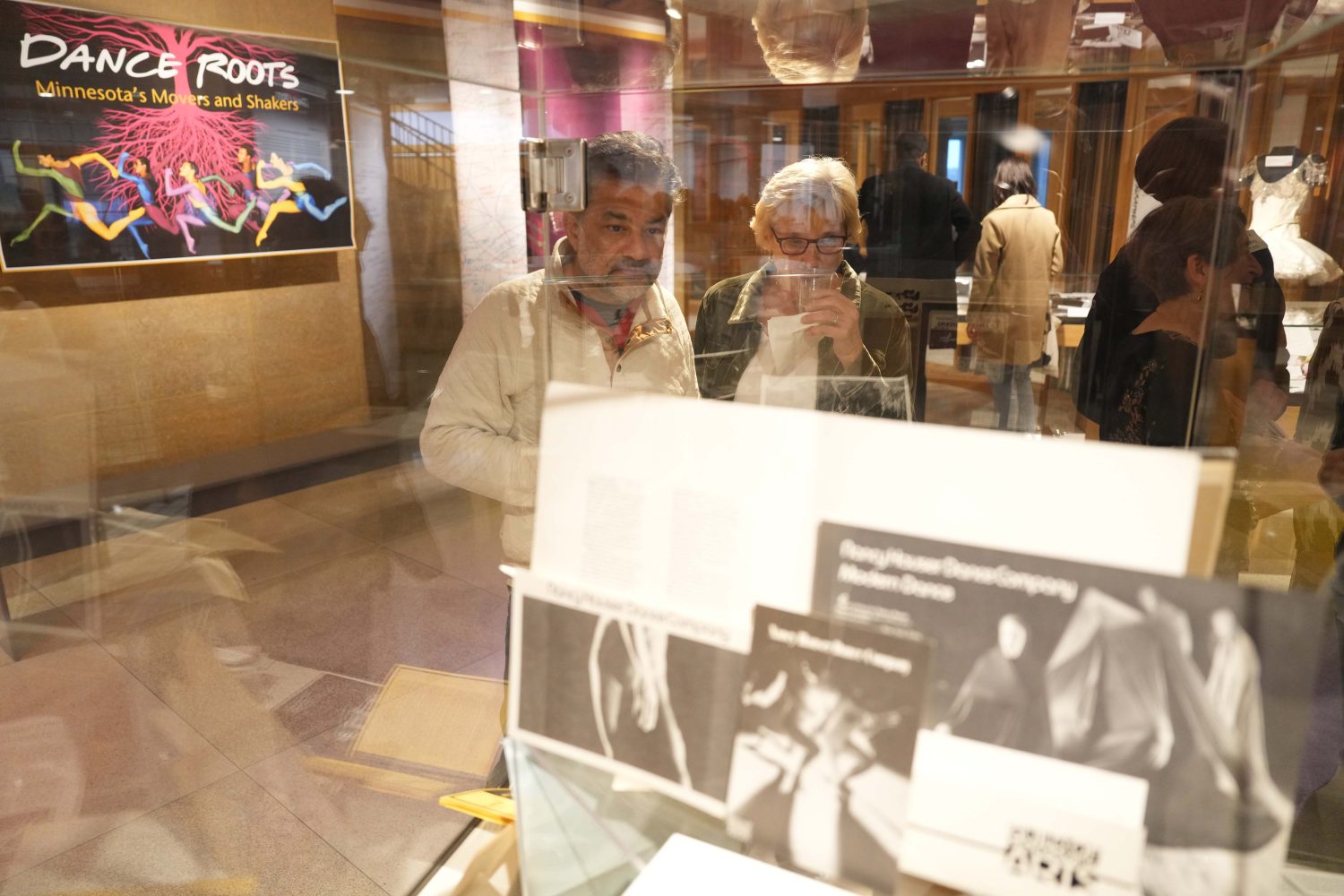
Attendees browse the display cases at the opening of PAA’s “Dance Roots” exhibit, on Oct. 27, 2023. Exhibit designed by Darren Terpstra. (Photo/Luke Logan)
Susana di Palma founded Zorongo Flamenco Dance Theatre and School in 1982, which performs both traditional flamenco programs as well as original theater flamenco works. The following year, dancers from the Saltari Folkdance Emporium founded the Tapestry Folkdance Center.
Cassandra Shore established the Jawaahir Dance Company in 1989, which seeks to bring the heritage of the Arabic-speaking Middle East into the spotlight. And in 1992, Ranee Ramaswamy launched the Ragamala Dance Company, a group that performs the South Indian dance form of Bharatanatyam.
HIJACK, who’s archives will soon join the PAA, was created by Kristin Van Loon and Arwen Wilder in 1993. The group is an experimental company that focuses on “making dance out of everything but dance.” And Arena Dances, a contemporary dance company, was opened in 1995 by Mathew Janczewski.
Uncovering the unknowns
The scope of dance in Minnesota, or even in the Twin Cities, isn’t quantifiable, Ultan said. And that presented a challenge: the exhibit reflects the archives, but the archives are not a complete picture.
“There’s so many people doing such extraordinary things, and it only reaches so far,” she said. “Minneapolis itself is so saturated in the arts that it made me curious about the levels of preservation and memory that is happening today and yesterday.”
Despite the breadth and depth of their records, there are holes. Scandinavian dance, for example, is completely missing from the archives. Organizations like TU Dance — which combined modern dance, classical ballet, African-based and urban vernacular movements — are also not yet represented in the archives.
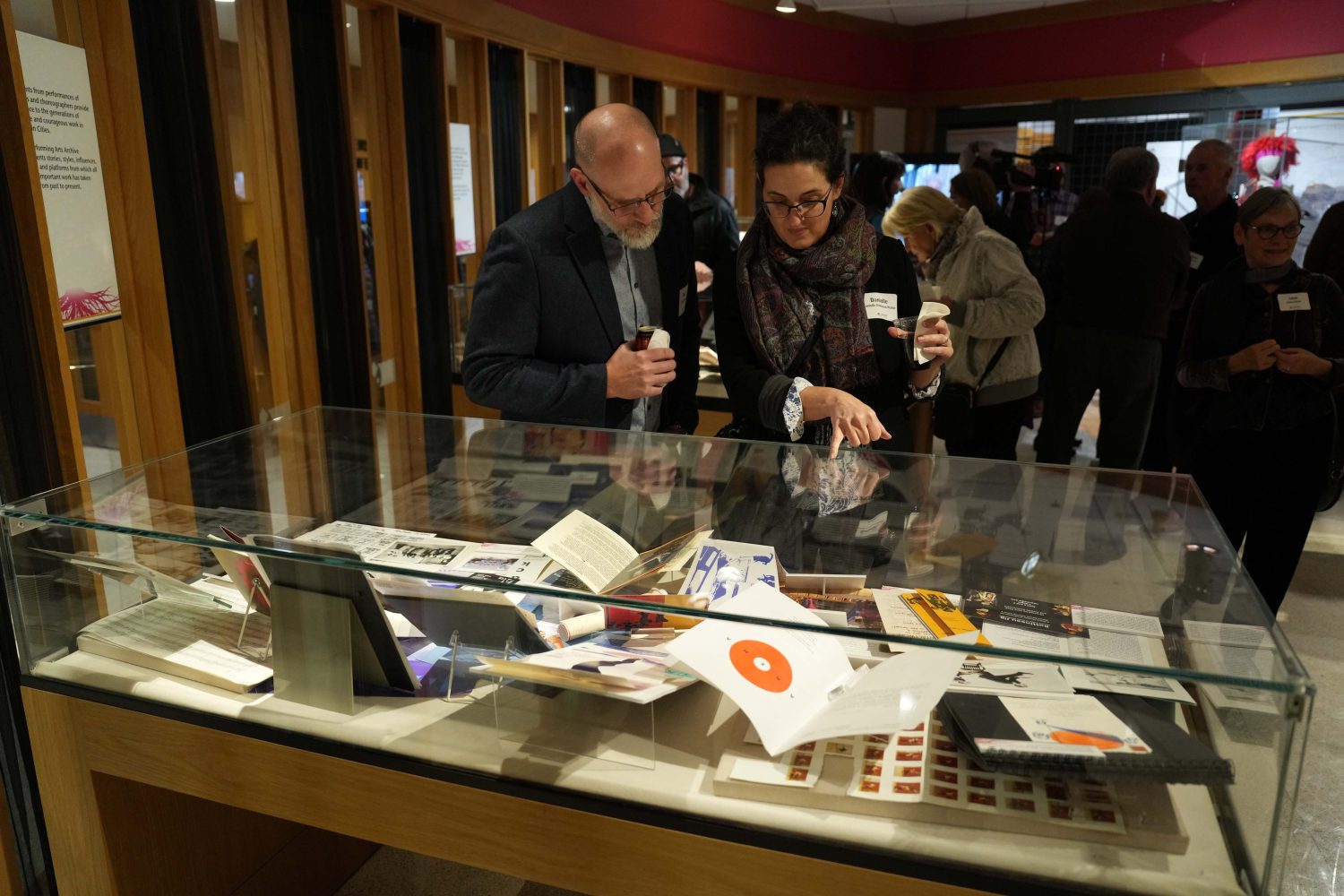
Attendees browse the display cases at the opening of PAA’s “Dance Roots” exhibit, on Oct. 27, 2023. Exhibit designed by Darren Terpstra. (Photo/Luke Logan)
“We don’t show enough of the incredible and vital BIPOC community here,” Utlan said.
The motivation behind the exhibit, Ultan explained, was partly to uncover those unknowns and encourage people and organizations to donate their materials. And so far, the exhibit has succeeded in spreading awareness.
“We’re getting emails all the time from new people who want to bring their collections in, as well as new researchers looking to study dance archives,,” she said.
‘There’s a giant sense of community’
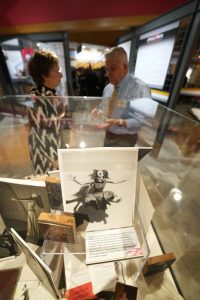
Attendees browse the display cases at the opening of PAA’s “Dance Roots” exhibit, on Oct. 27, 2023. Exhibit designed by Darren Terpstra. (Photo/Luke Logan)
Ultan hopes people recognize the prevalent, diverse artistry of Minnesota, from imagination to choreography, to the hours of dedication, education, and expression. She wants people to see just “how colorful Minnesota is with all these extraordinary artists.”
This isn’t limited to the dancers themselves, but all those who support Minnesota dance, including writers and journalists who write articles, features, and newsletters; photographers and videographers who capture those ephemera moments of dance; educators who pass on their knowledge and traditions; and many more.
Today’s sundry landscape is as expansive as imaginable, with venues on every scale from private homes to large auditoriums to the open streets, and with forms of dance from classical to experimental.
“Everyone has something to contribute, influence or critique. There’s a giant sense of community,” Miller said.
To Miller, the exhibit is a call not just to remember the history, but to remember your personal experience with that history. Throughout the project, the team’s motto was “to remember with integrity.”
“It’s not just letters. It’s not just programs. It’s wonderful micro details,” she said. “The exhibit reminds people to put that level of attention and integrity into their daily lives and into their memories.”
Exhibit Details
“Dance Roots: Minnesota’s Movers and Shakers” is on display at the Elmer L. Andersen Library’s first floor gallery through Jan. 31, 2024. The exhibit is open during regular library hours from 9 a.m. to 5 p.m. on Monday, Tuesday, and Friday; and 9 a.m. to 7 p.m. on Wednesday and Thursday.
Mary Moore Easter will be reading from her book, “The Way She Wants To Get There: Telling on Myself,” on Jan. 19, 2024, at 11:30 a.m. in Andersen Library. Her book is currently on display in the exhibit.
If you would like your dance archive to become a part of the University’s PAA, or if you’re interested in visiting the PAA, please email Curator Deborah Ultan, ultan004@umn.edu.


